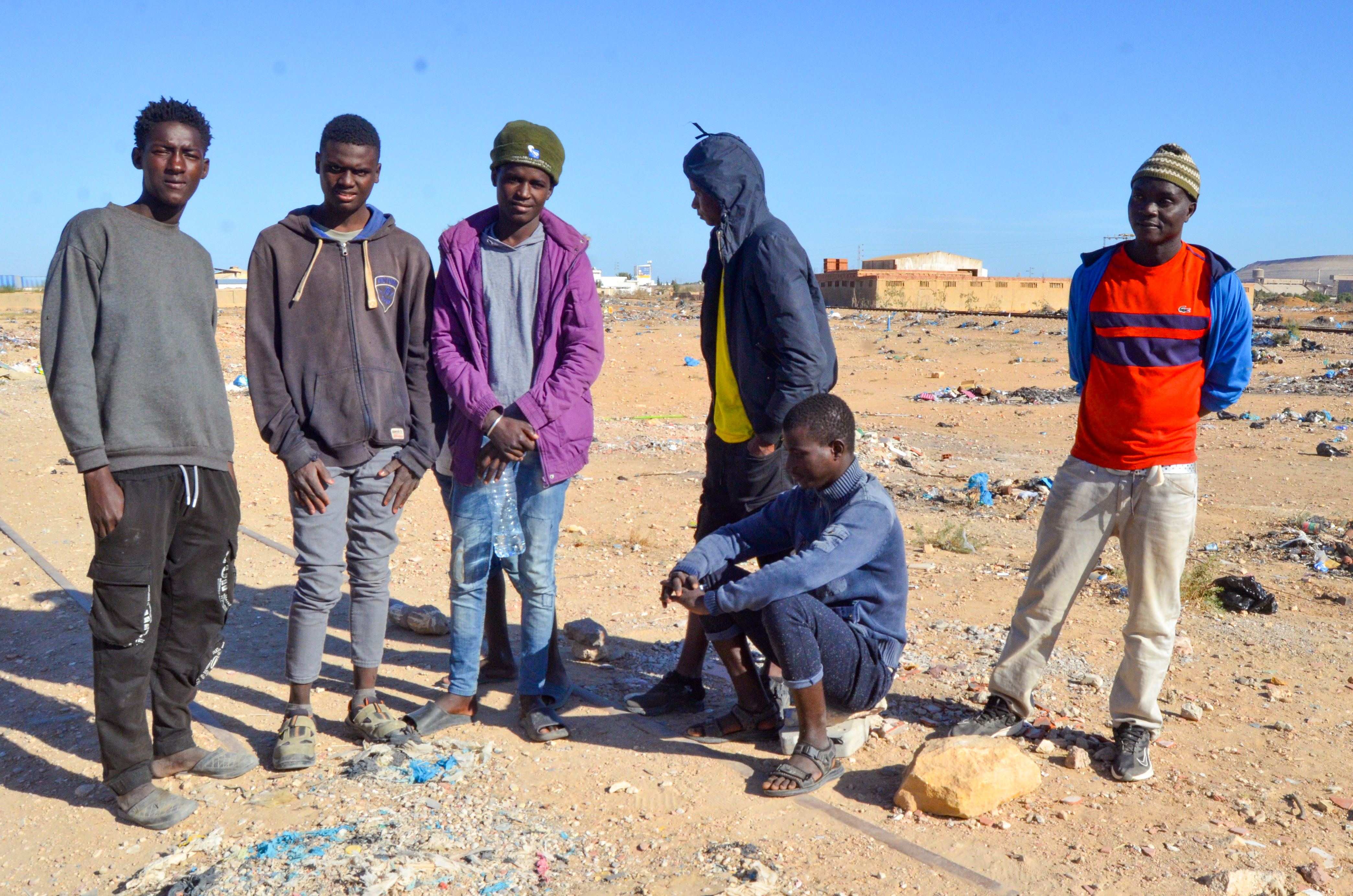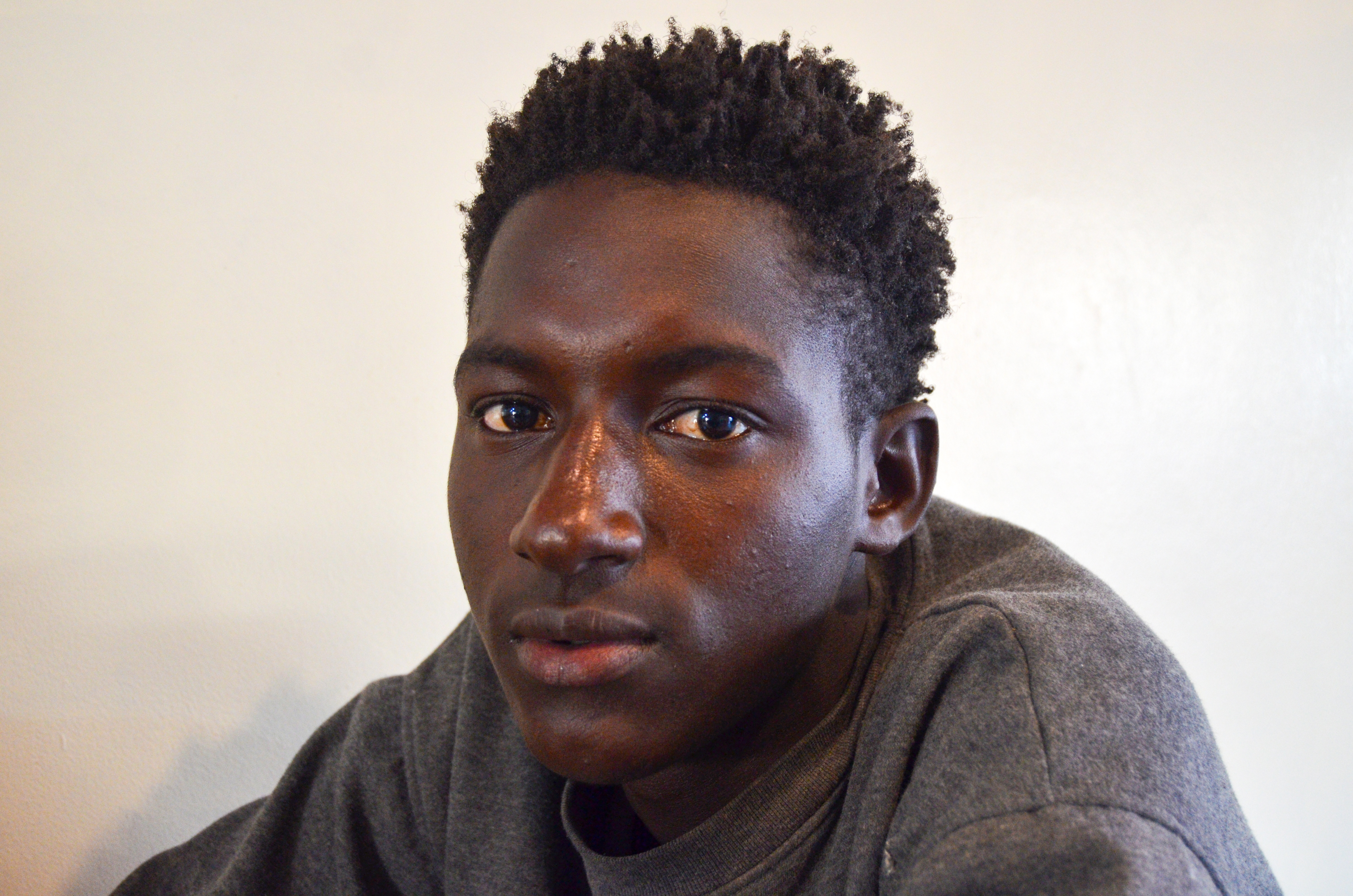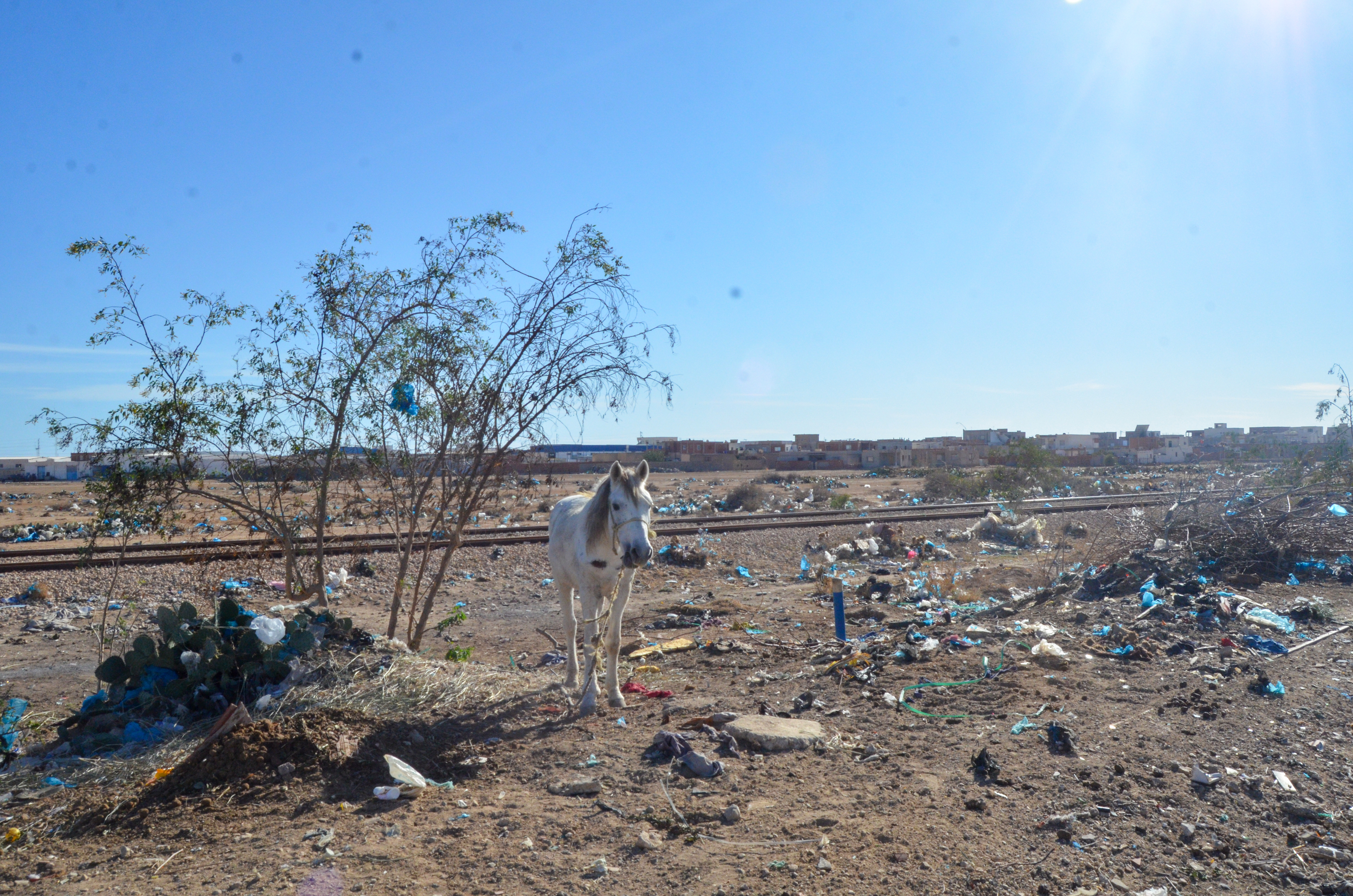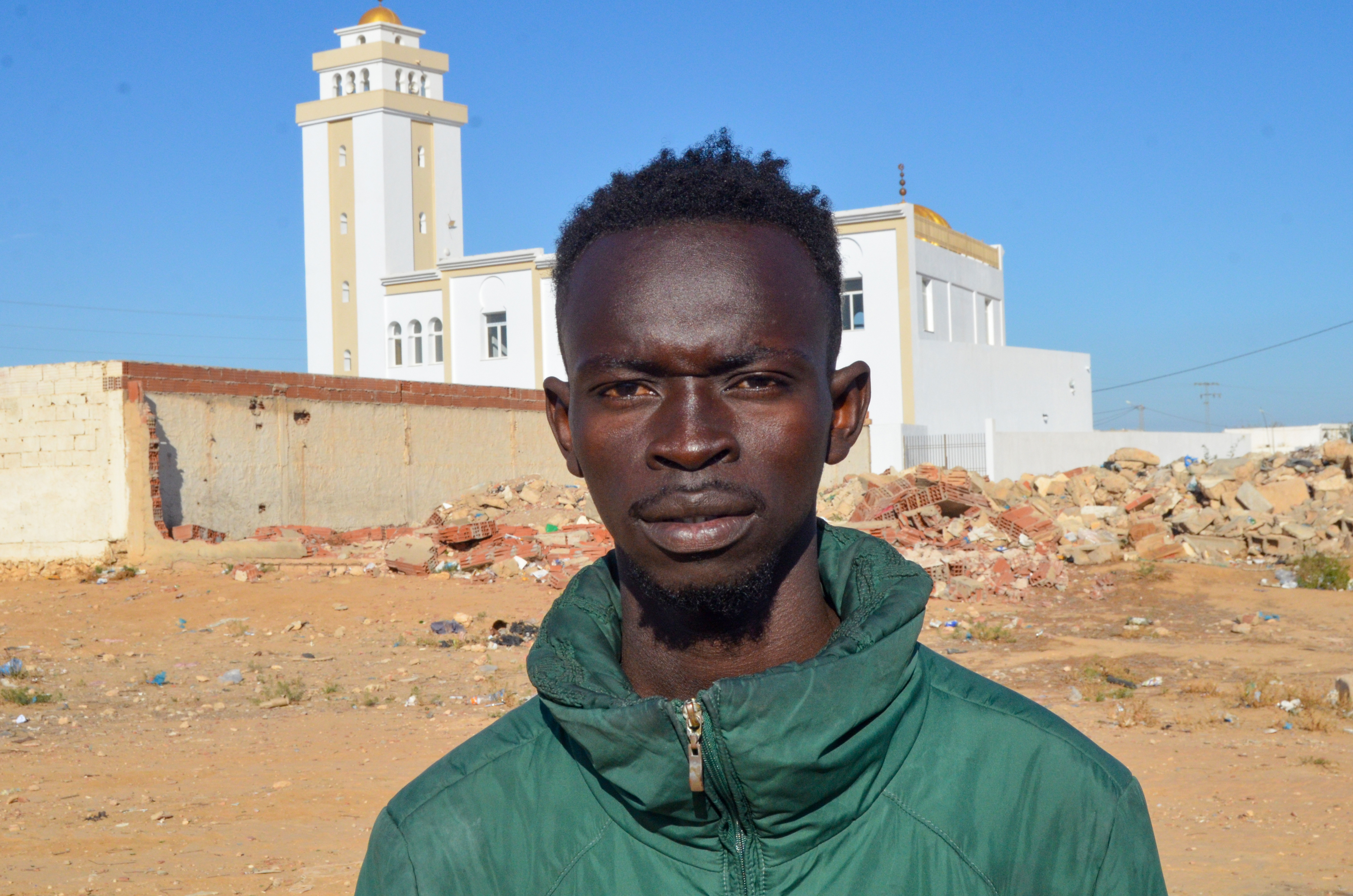
Sfax, Tunisia – On the outskirts of Tunisia’s second-largest city and the destination point for thousands of sub-Saharan African refugees hoping to get to Europe, 15-year-old Osman Bah from Guinea points to his sleeping quarters.
The spot is hard to make out among the grey sand and plastic bags scattered across the wasteland, but it is there, he says, in the lee of some piled-up dirt and stones.
Other than the squat, yurt-shaped shelter, put together with pallets and plastic, there is nothing here but the distant outline of phosphate heaps, the occasional passing train and a white horse, tethered to a tree and standing defiant against the bleakness of its surroundings.
All the same, it is here and to the olive groves of Al Amra, about 25km (15.5 miles) away, that thousands of Black refugees and migrants were either bused or fled to after the Tunisian security services launched an operation to evict them from Sfax’s city centre in September.

Since then, the situation has deteriorated further. Right now, the fields around Al Amra have been locked down by the police and national guard as security units comb the area for a gun and ammunition reportedly lost during confrontations with the refugees and migrants sleeping rough there. A situation those living on the scrubland refer to as “the problem”.
The choice of Al Amra as the site where the authorities moved them is significant.
Long before the evictions, Al Amra and the small, hardscrabble hamlets around it, such as El-Hamaziah, were already established departure points for those seeking to escape their lives in sub-Saharan Africa for new ones in Europe. There, crude metal boats would be assembled by local fishermen and their families, the refugees say, before being bought and chartered for Europe by the refugees themselves.
The decision to flood the region with yet more arrivals from sub-Saharan Africa has not been explained. However, some say it is not insignificant that the move came amid rising tensions between Tunisia and the European Commission surrounding a “pact on migration” that the two sides signed in July.
An influx of refugees fleeing the war in Sudan, which has raged since April, has already sorely tested Tunisia’s resources and put its relations with Europe under increasing strain.
Violence against Black people had exploded across Tunisia in February when President Kais Saied accused the refugees of bringing “violence, crime and unacceptable practices” to the country as part of a wider plot to change the predominantly Arab country’s demographic makeup.

‘The police released tear gas, lots of tear gas’
On November 24, the situation in Al Amra escalated again. “Lots of police arrived,” Omar Jjie, an 18-year-old Gambian tells Osman, who translates roughly. “They dug up the boats [to be used for transporting people to Europe] buried under the sand.
“The boys, they grew very angry and threw stones, so the police released tear gas, lots of tear gas.”
In the ensuing melee, four national guardsmen were reportedly injured. Video shared widely on social media ostensibly shows a stricken guardsman lying on the ground, immobile and bleeding.
The people camped there claim that three of their number lost their lives during the violence as well. One, Mohammed Ceesay, was well known to those sleeping rough.
Twenty people were arrested in the confrontation’s immediate aftermath. Reports of more being rounded up and expelled to Libya and Algeria are also growing, which would be an act in contravention of international law and is one Tunisia has denied undertaking.
Omar insists he played no role in the violence, saying he only witnessed it. But as someone who had already paid the 500 euros ($545) for a place on one of the boats, raised through casual work picking olives and money sent by wire from his family in Gambia, he had no choice but to watch as his boat was unearthed and destroyed by the police.
Now, he sits slumped outside a cafe on the far side of the wasteland, back on the outskirts of Sfax, a small crowd gathered around him, asking if what friends in Al Amra have told them about the events over social media is true.
“I walked [here] on the back road,” he says, switching to English. “I walked from 19km,” he says, using the shorthand common among many here, supplanting road distance markers for place names. “I don’t want the police to see me. There are so many police there. They are looking for the gun.”
Locked down
Since November 24, security units have essentially locked the region down. French newspaper Le Monde reported increasing numbers of special units from the national guard being deployed as well as police officers with the National Rapid Intervention Brigade.
The local member of parliament, Fatma Mseddi, spoke on local radio, accusing the refugees of “terrorising” local inhabitants and being members of Boko Haram despite the majority coming from Sudan, not a location typically associated with the armed group.

“The police, they are angry and they lose one gun and six rounds,” Ibrahim Njie from Guinea says as he stands outside a nearby mosque, its foundation skirted with rubble and isolated scrub. “My friend says the police came and took them prisoner. They say, ‘If you return the gun, we will let you go.'”
One young man who gives his name simply as Mohammed adds: “If [the police] catch you here, they take away your phone and your money. Sometimes they take you away to Libya or Tebessa [a town in Algeria close to the border with Tunisia]. Many of my friends have been taken.”
“Six buses, they come here,” he says gesturing around the desolate scrubland.
According to Mohammed and others, two days after the confrontation in Al Amra, two Black refugees died after falling from a rooftop while trying to escape the police.
Osman believes he will get to Europe eventually, whatever the circumstances, he says.
He texts from a friend’s phone later in the day. He had just talked to his sister in Gambia.
It had been months since he last talked with them. For Osman, at least, there is still hope.







